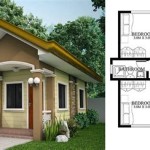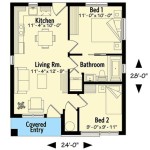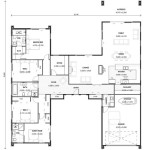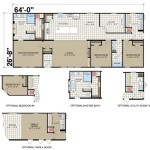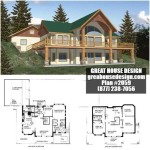House Plans Less Than 1000 SF: Maximizing Space and Efficiency
The demand for smaller, more efficient housing continues to grow, driven by factors like affordability, environmental concerns, and a desire for simplified living. House plans less than 1000 square feet are becoming increasingly popular as they offer a viable solution for individuals, couples, and even small families seeking a comfortable and functional living space without the financial burden of a larger home. These compact designs require careful planning and innovative solutions to maximize every inch of available space, ensuring comfort, practicality, and aesthetic appeal.
Designing a house within such a limited footprint necessitates a different approach compared to conventional construction. Every design element, from the layout and room dimensions to the choice of materials and fixtures, must be carefully considered to optimize functionality and create a sense of spaciousness. The focus shifts from simply filling space to strategically utilizing it, often incorporating multi-functional areas, clever storage solutions, and elements that blur the lines between indoor and outdoor living.
The appeal of these smaller homes extends beyond first-time homebuyers or those seeking to downsize. They are also attractive options for individuals interested in building accessory dwelling units (ADUs) on existing properties, creating vacation homes or rental properties, or embracing the tiny house movement. Regardless of the specific application, understanding the principles of small-space design and the various floor plan options available is crucial for achieving a successful and satisfying outcome.
Key Points to Consider When Choosing House Plans Under 1000 SF
Designing or selecting a house plan under 1000 square feet requires careful consideration of several key factors to ensure the resulting space meets the homeowner's needs and lifestyle. Overlooking these considerations can lead to a cramped, uncomfortable environment that fails to provide the necessary functionality. The following points outline some of the most important aspects to bear in mind:
1. Prioritizing Needs and Lifestyle
Before even looking at floor plans, it’s crucial to honestly assess individual needs and lifestyle. This includes identifying the number of occupants, their daily routines, hobbies, and any specific requirements, such as a home office or accessibility features. The number of bedrooms and bathrooms needed will be a primary factor, but also consider the importance of features like a dedicated dining area, a large kitchen, or ample storage space. If entertaining is a frequent activity, then an open-concept living area might be a priority. Conversely, a quiet, private workspace may be more important for someone who works remotely. Understanding these priorities will help narrow down the search and ensure that the chosen house plan aligns with the occupants' actual needs.
Consider how often certain spaces will be used. For example, if cooking is a passion, then a larger, more well-equipped kitchen should be prioritized. If outdoor living is important, then a deck or patio should be incorporated into the design. If the home is intended for aging in place, then single-story layouts and accessibility features, such as wider doorways and grab bars in the bathroom, should be considered. Failure to prioritize needs can result in a home that feels cramped and inconvenient, regardless of how well-designed it may be.
Lifestyle considerations also extend to storage needs. Evaluate current belongings and anticipate future acquisitions. Consider built-in storage solutions, such as shelving and drawers, to maximize vertical space and minimize clutter. Explore multi-functional furniture options, such as ottomans with hidden storage or beds with drawers underneath, to further optimize space utilization.
2. Optimizing Space Through Layout and Design
The layout and design of a house plan under 1000 square feet are critical for maximizing space and creating a comfortable living environment. Open-concept layouts, where the living room, dining area, and kitchen flow seamlessly together, are a common and effective strategy for making a small space feel larger. This approach eliminates the need for interior walls, which can visually and physically divide the space, creating a more open and airy atmosphere.
Vertical space is another valuable asset in small homes. Utilizing high ceilings can create a sense of spaciousness, and lofts can be incorporated to add extra living or storage space. Lofted bedrooms or living areas can be accessed by ladders or stairs, freeing up floor space for other functions. However, it’s important to ensure that the ceiling height in the lofted area is adequate for comfortable movement and use.
The strategic placement of windows and doors can also significantly impact the feeling of spaciousness. Large windows and glass doors can bring in natural light and connect the interior with the outdoors, blurring the lines between the two and creating a more expansive feel. Consider incorporating skylights to bring in additional natural light, especially in areas that may not have access to windows. The placement of doors should be carefully considered to minimize wasted space and maximize flow. Pocket doors, which slide into the wall, are an excellent option for saving space compared to traditional swing doors.
Furniture selection is also crucial in small spaces. Choose furniture that is appropriately sized for the room and avoid bulky pieces that will overwhelm the space. Multi-functional furniture, such as sofa beds, folding tables, and storage ottomans, can help to maximize space utilization. Consider using lighter colors and materials to create a brighter and more open feel.
3. Integrating Smart Storage Solutions
In a house less than 1000 square feet, efficient storage is not a luxury but a necessity. Maximizing storage space is essential for maintaining a clutter-free and organized living environment. Built-in storage solutions, such as shelving, drawers, and cabinets, are a highly effective way to optimize vertical space and keep belongings out of sight. Consider incorporating built-in storage in areas such as hallways, under stairs, and around windows.
Vertical storage is particularly important in small homes. Utilize the full height of walls by installing shelves and cabinets that extend to the ceiling. Hanging storage systems, such as pegboards and hooks, can be used to organize items such as tools, kitchen utensils, and clothing. Consider using clear storage containers to easily identify the contents and keep items organized.
Creative storage solutions can also be found in unexpected places. Hollow furniture, such as coffee tables and ottomans with hidden storage compartments, can provide extra space for storing blankets, books, and other items. Under-bed storage drawers are a great way to maximize space in bedrooms. Consider using wall-mounted organizers in bathrooms and kitchens to store toiletries and kitchen supplies.
When designing storage solutions, consider the specific items that need to be stored and their frequency of use. Store frequently used items in easily accessible locations and less frequently used items in out-of-the-way places. Label storage containers clearly to make it easy to find what you're looking for.
Consider the use of modular storage systems that can be customized to fit specific needs and spaces. These systems allow for flexibility and can be easily reconfigured as needs change. Utilizing a consistent style and color scheme for storage containers and organizers can help to create a cohesive and organized look throughout the home.
By carefully considering these key points, prospective homeowners can find or design house plans under 1000 square feet that provide a comfortable, functional, and aesthetically pleasing living space that meets their specific needs and lifestyle. The key lies in thoughtful planning, creative design solutions, and a commitment to maximizing every inch of available space.
Furthermore, it is highly recommended to consult with experienced architects and designers who specialize in small-space living. Their expertise can be invaluable in navigating the challenges of designing a compact home and ensuring that the final result is both practical and visually appealing. They can provide insights into the latest trends and technologies in small-space design and help to tailor the plan to the specific site conditions and local building codes.
Ultimately, choosing a house plan less than 1000 square feet is a decision that requires careful consideration and a willingness to embrace a minimalist lifestyle. However, with the right planning and design, it can be a rewarding and fulfilling experience, providing a comfortable and affordable home that aligns with individual values and priorities.

7 Ideal Small House Floor Plans Under 1 000 Square Feet Cottage

10 Modern Under 1000 Square Feet House Plans Craft Mart

Our Top 1 000 Sq Ft House Plans Houseplans Blog Com
House Plan Of The Week 2 Beds Baths Under 1 000 Square Feet Builder

Our Top 1 000 Sq Ft House Plans Houseplans Blog Com

Affordable House Plans For Less Than 1000 Sq Ft Plot Area Happho

2 Bed Bath House Plans Under 1 000 Sq Ft Houseplans Blog Com

House Plans Under 1000 Square Feet

Simple Modern Farmhouse Plan Under 1 000 Square Feet 85263ms Architectural Designs House Plans

Traditional Style With 2 Bed Bath New House Plans Small Floor

